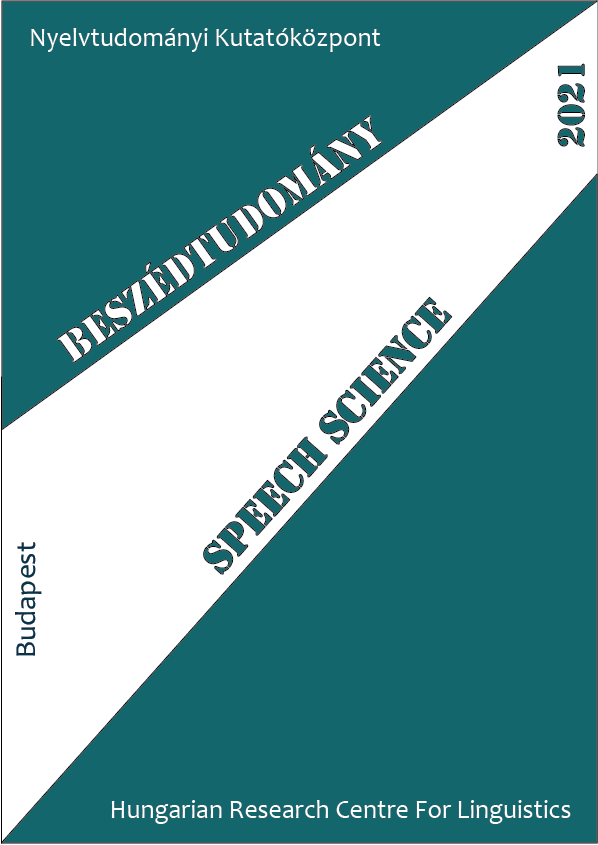Lexical and Syntactic Features of Infant-Directed Speech: A Longitudinal Study
Abstract
The infant-directed speech (IDS) is distinguished by specific acoustic properties and lexical/syntactical simplification from the adult-directed speech (ADS). The lexical and syntactic features of IDS are not well described, especially in Hungarian. Previous studies have conflicting conclusions about how the components of IDS become more complex according to development of the children, whether the advancement is linear or non-linear. We presumed a minimum complexity after the 6 months of age. In this paper we are studying the speech quantity (number of utterances), lexical features (type-token ratio, verb-noun ratio, number of worlds) and syntactic features (mean length of utterance, number of clauses) in maternal language during story-telling sessions in a longitudinal research. 22 mother-infant dyads participated at 1 day, 6 months and 18 months of age. We recorded both an IDS and an ADS storytelling in each session. We found the maximum of lexical and syntactical simplification for IDS to the 18 months olds. For the oldest children in our study the mothers told the fairytale with more utterances, applying fewer vocabulary with more repetitions. Their utterances were significantly shorter. Overall, the maternal IDS is characterized by greater verbosity in smaller units. Our results conclude non-linear progression of maternal IDS to the child’s age.




